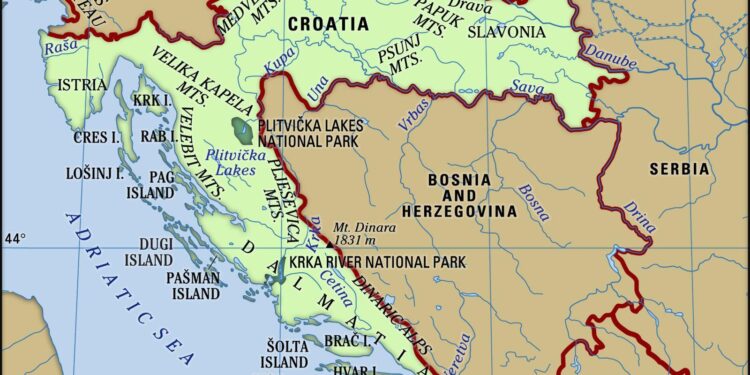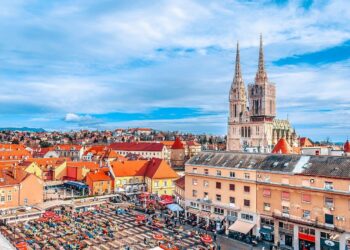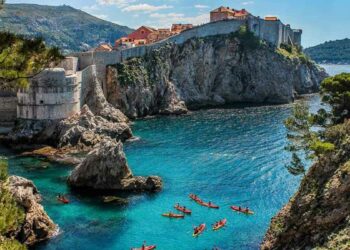Croatia has witnessed a notable surge in foreign tourist arrivals in 2025, underscoring its growing appeal as a premier travel destination in Europe. Key cities such as Dubrovnik and Split continue to captivate international visitors with their historic charm, vibrant culture, and stunning coastal landscapes. This upward trend not only reflects the country’s successful tourism strategies but also signals a robust recovery and expanding interest in Croatia’s diverse offerings within the global travel market.
Croatia Experiences Surge in Foreign Tourist Arrivals Fuelled by Dubrovnik and Split
In 2025, Croatia has witnessed a remarkable upswing in the number of foreign tourists, largely driven by the unparalleled attractions of Dubrovnik and Split. These two coastal cities have emerged as premier destinations for travelers seeking a blend of historical charm, stunning Adriatic views, and vibrant cultural experiences. Dubrovnik’s ancient city walls and iconic Old Town continue to captivate visitors, while Split’s bustling waterfront and proximity to scenic islands provide an ideal base for exploring the Dalmatian coast. This surge reflects a broader trend of increasing interest in Mediterranean countries that offer rich heritage alongside natural beauty.
The tourism boom has also had noticeable economic and social impacts, with local businesses in both cities thriving thanks to the influx of international visitors. Key factors contributing to this growth include:
- Enhanced flight connectivity with major European hubs
- Expanded hospitality infrastructure, including boutique hotels and seaside resorts
- Government initiatives promoting sustainable tourism and cultural events
- Year-round activities and festivals attracting diverse visitor segments
| City | Tourist Arrivals (2024) | Tourist Arrivals (2025)* | Year-on-Year Growth |
|---|---|---|---|
| Dubrovnik | 1.5 million | 1.8 million | 20% |
| Split | 1.2 million | 1.5 million | 25% |
*Projected figures sourced from the Croatian National Tourist Board
Dubrovnik and Split Stand Out as Preferred Destinations Driving Tourism Growth
Dubrovnik and Split have emerged as key catalysts in Croatia’s robust tourism sector, attracting a surge of foreign visitors throughout 2025. Renowned for their rich history, stunning coastal views, and vibrant cultural scenes, these cities have successfully leveraged their unique attractions to distinguish themselves in a competitive global travel market. Dubrovnik’s iconic medieval walls and Split’s ancient Roman architecture continue to captivate tourists, drawing repeat and new visitors alike who seek immersive experiences beyond traditional beach vacations.
Tourism experts highlight several factors contributing to the cities’ popularity:
- Enhanced connectivity via new flight routes and improved transport infrastructure.
- Increased investment in sustainable tourism initiatives and high-quality accommodations.
- Expansion of cultural events and festivals promoting local heritage and arts.
The combined effect of these elements has not only elevated the travel appeal of Dubrovnik and Split but also supported wider economic benefits in the region, signaling a promising trajectory for Croatia’s tourism industry in the coming years.
| City | Increase in Foreign Arrivals (2024-2025) | Top Visitor Activity |
|---|---|---|
| Dubrovnik | 18% | Historical Tours & Sightseeing |
| Split | 22% | Beach & Cultural Festivals |
Industry Experts Recommend Enhanced Infrastructure and Sustainable Practices to Sustain Momentum
Leading authorities in the tourism and infrastructure sectors emphasize that maintaining Croatia’s upward trajectory in foreign tourist arrivals demands strategic investments in both infrastructure and environmental stewardship. Cities like Dubrovnik and Split, which continue to draw increasing numbers of visitors, require enhanced transportation networks, upgraded public amenities, and improved digital connectivity to support the growing influx. Experts note that initiating sustainable urban development projects now will not only alleviate seasonal pressures but also elevate the overall visitor experience, making these destinations more resilient to future demands.
In addition to physical enhancements, a collective push towards sustainable tourism practices has been identified as essential. Stakeholders advocate for measures such as:
- Promoting eco-friendly accommodations and incentivizing green certifications for hotels and resorts.
- Implementing waste management programs specifically designed for high-traffic zones.
- Encouraging local businesses to integrate responsible tourism practices, preserving cultural and natural heritage.
| Infrastructure Focus | Sustainability Target | Projected Impact by 2030 |
|---|---|---|
| Public Transport Expansion | Reduced Carbon Emissions | 30% lower per capita |
| Smart City Technologies | Energy Efficiency | 20% improvement |
| Waste Recycling Initiatives | Landfill Reduction | 50% decrease |
Future Outlook
As Croatia continues to attract an increasing number of foreign tourists in 2025, the sustained popularity of destinations like Dubrovnik and Split underscores the country’s growing appeal on the global travel map. With its blend of historic charm, scenic coastlines, and vibrant cultural offerings, Croatia is solidifying its status as a must-visit Mediterranean hotspot. Industry experts anticipate that this upward trend in arrivals will contribute positively to the nation’s economy and reinforce its position as a key player in the international tourism sector moving forward.
















